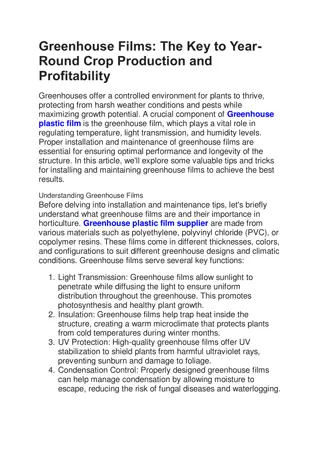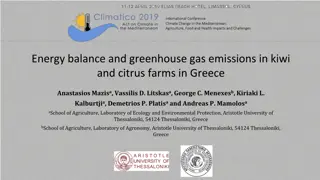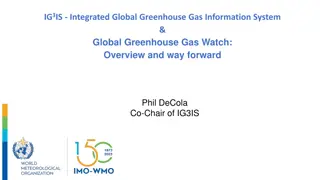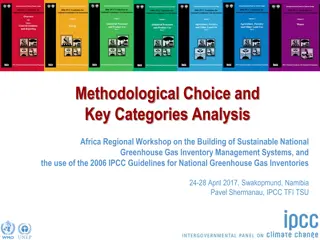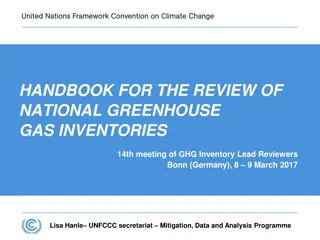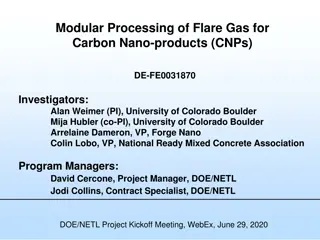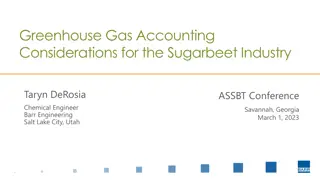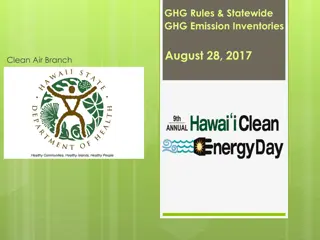Colorado Greenhouse Gas Tracking & Reporting Overview
This content provides detailed information about Colorado's Greenhouse Gas Tracking & Reporting, Greenhouse Gas Reduction Targets, Verification Workbook, Emission Rates, and Key Items for Reporting/Tracking in a Day Ahead Market or RTO. It outlines the methodology, targets, and requirements for reducing emissions in Colorado, focusing on electricity sales and resources within the state. The information covers owned resources, purchases, market activities, emission offsets, and more, offering insights into the state's efforts to reduce greenhouse gas emissions effectively.
Download Presentation

Please find below an Image/Link to download the presentation.
The content on the website is provided AS IS for your information and personal use only. It may not be sold, licensed, or shared on other websites without obtaining consent from the author.If you encounter any issues during the download, it is possible that the publisher has removed the file from their server.
You are allowed to download the files provided on this website for personal or commercial use, subject to the condition that they are used lawfully. All files are the property of their respective owners.
The content on the website is provided AS IS for your information and personal use only. It may not be sold, licensed, or shared on other websites without obtaining consent from the author.
E N D
Presentation Transcript
Colorado GHG Tracking & Reporting December 18, 2023
Colorado Greenhouse Gas Targets & Reporting Methodology Greenhouse Gas Reduction Targets Based on emissions for wholesales electricity sales in Colorado from a 2005 baseline Mass based percent reduction (ex. 80% reduction by 2030 from 2005 baseline) Air Pollution Control Division (APCD) Verification Workbook*: Supply Owned Resources: In-state resources and imports from out-of-state resources Purchases: Short- or long-term power purchase agreements; bilateral activity Market Activity: Net of purchases and sales specific to Colorado Sales: Member/retail load, bilateral sales and charging load in Colorado Exports from CO resources to sales or load out-of-state Emission Offsets: Contracts where state emissions responsibility passes to another CO utility Responsible for emissions of Supply minus any Offsets (GHG metric tons of baseline year minus GHG metric tons of target year)/GHG metric tons of baseline year *Clean Energy Plan/Electric Resource Plan requirement TRI-STATE 2023 2
APCD Verification Workbook Emission Rates APCD Category Description Emission Rate Type for Calculation Owned Resources Credit for in-state owned renewables resources Responsible for in-state owned emitting resources Specified Resource Emission Rate Purchases Credit for in-state renewables resources under contract Responsible for in-state bilateral purchases (specified and unspecified energy) Credit for out-of-state renewable resources designated with firm transmission to serve state Specified Resource Emission Rate where applicable & Unspecified Energy Emission Rate for all else Market Activity Market Purchase Activity Market Sales activity Unspecified Energy Emission Rate Note: Specified source emissions rate for calculations must be from most granular level available Region, Balancing Authority, System, Plant, Unit. TRI-STATE 2023 3
Key Items for Reporting/Tracking in a Day Ahead Market or RTO Need rules to allow for attribution of owned/contract resources Need data to determine rate for unspecified energy Emissions of resources serving market not attributed to a utility Average, Marginal, Residual? Is this regional or market-wide for Markets+? Time for utilities to pursue modifications in state regulations if needed TRI-STATE 2023 4

